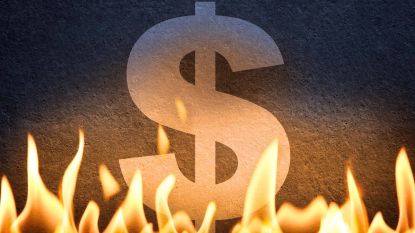The next CPI report is giving traders and investors even more agita than usual. Fears are running high that a hot January inflation print will force the Federal Reserve to send interest rates higher and keep them there longer.
And after a stunningly strong January jobs report, the market’s worries aren’t exactly misplaced.
After all, the S&P 500 rose more than 6% in the first month of 2023 thanks in part to expectations that the Fed would pivot away from its aggressive policy on interest rates sometime later this year.
Subscribe to Kiplinger’s Personal Finance Be a smarter, better informed investor.
Save up to 74%
Sign up for Kiplinger’s Free E-Newsletters Profit and prosper with the best of expert advice on investing, taxes, retirement, personal finance and more – straight to your e-mail.
Profit and prosper with the best of expert advice – straight to your e-mail.
But try as the Fed might to tame inflation by increasing unemployment, the labor market has thus far refused to play along. Hiring remains robust and unemployment is at a 53-year low. These facts alone make it harder for the Fed to ease up on its rate policy.
If the next CPI report surprises to the upside like the January jobs report did, it will further dash hopes for a more dovish central bank in the latter part of 2023. Worse, rising interest rates raise the possibility of a Fed-induced recession.
As for the next CPI report, the Consumer Price Index (CPI) for January is slated for release by the Bureau of Labor Statistics (opens in new tab) on Tuesday, Feb. 14, at 8:30 a.m. Eastern time. Economists surveyed by Dow Jones (opens in new tab) forecast headline inflation to increase 0.4% on a monthly basis, and by 6.2% year-over-year.
Below please find a selection of commentary from economists, strategists and other market pros on what to expect from the next CPI report, sometimes edited for clarity or brevity.
Experts Weigh in on the Next CPI Report
(Image credit: Getty Images)
“This week’s headlines will be dominated by Tuesday’s CPI report and Thursday’s PPI report. Both inflation measures have trended downward in recent months. We will be looking for a continuation of that trend. After January’s jobs report brought about renewed Fed hawkish rhetoric, the CPI will need to show markets that the Fed’s plan and actions are coming to fruition. If inflation starts trending upwards again, the Fed could be forced to alter its path.” – Kevin Simpson, founder and chief investment officer at Capital Wealth Planning (opens in new tab)
“Any core CPI reading under 5.5% would likely be a short-term upward catalyst for stocks and any reading above 5.5% would likely be viewed negatively by the markets over the very short-term. Our expectation is that something in the middle and in-line with most projections is apt to be reported, to the chagrin of both those betting on higher and on lower numbers. The stock market rally so far this year is disconnected from the economic backdrop and its strength is largely fueled by retail investors buying speculative stocks that had been crushed in 2022. The current market strength is ignoring the Federal Reserve’s signals that higher for longer interest rates is the new normal.” – George Ball, chairman of Sanders Morris Harris (opens in new tab)
“Headline CPI prices probably rose solidly in January as gasoline prices swung from holding down inflation in December to pushing it up in January. Food at home prices are also projected to pick up. Retail used vehicle prices look to have fallen again (though somewhat less than the prior few months) and we project a solid slowing in rents (though still a robust increase). We think the risks are skewed to the upside this month. The upside risks to the CPI projection could also imply added upside risk to our outlook for the federal funds rate.” – UBS Global Research (opens in new tab), Economics, Americas
“The market’s focus is on January U.S. CPI inflation – specifically on core services inflation, the most affected by tight labor markets and higher wages. December core CPI was revised up sharply last week, showing it hadn’t slowed nearly as much as first reported. We’re also looking for ongoing signs of economic damage in U.S. retail sales and industrial production.” – BlackRock Investment Institute (opens in new tab)
“Markets are on tenterhooks ahead of tomorrow’s key number of the week — the January CPI report. The consensus is at +0.5% month-over-month for the headline index (and +0.4% for the core [excluding volatile food and energy prices]), but there is a risk of a higher number due to two quirks — a sudden and seemingly inexplicable bounce in used vehicle prices and medical care services prices. Tack on the +10% rebound in gasoline prices. The benchmark Bureau of Labor Statistics revisions that showed more upside in seasonally-adjusted consumer prices, along with the long line of hawkish Fed rhetoric, reversed the recent downtrend in the 10-year T-note yield in rather dramatic fashion.” – David Rosenberg, founder and president of Rosenberg Research (opens in new tab)
“Consumer prices look to rise the most in three months in January, by 0.5%, pumped by higher gas prices and food costs and a sharp rebound in used car prices. The core CPI looks to bounce 0.4% in January, as per the prior month (post-revision). Helped by favorable year-ago comparisons, the annual headline rate should retreat by a tenth to 6.4%, while the core rate could slip two tenths to 5.5%, still well above target.” – Michael Gregory, deputy chief economist at BMO Capital Markets (opens in new tab)
